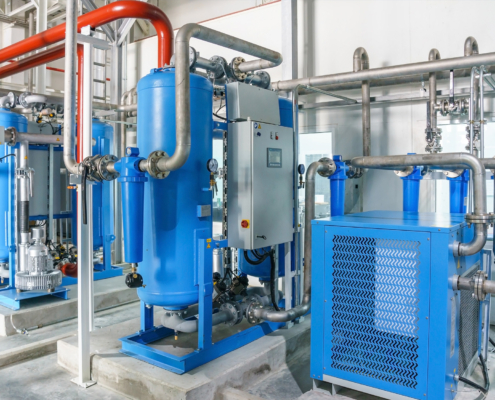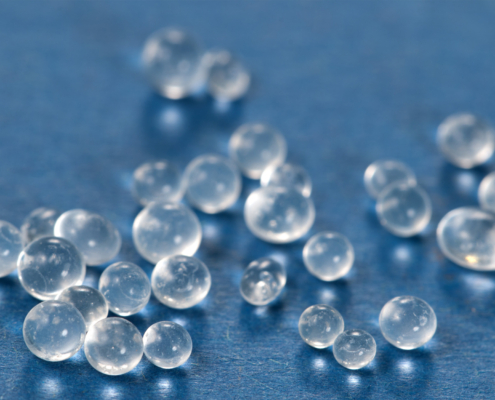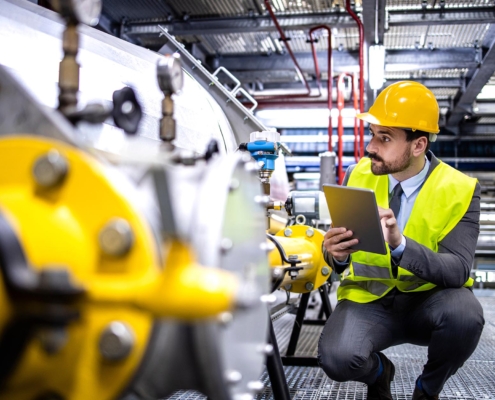 https://pioneerair.com/wp-content/uploads/2024/05/Choosing-Replacement-Desiccant-Air-Dryers-Pitfalls-to-Avoid.jpg
1250
2000
Abstrakt Marketing
/wp-content/uploads/2022/05/pioneer_air_systems_logo.png
Abstrakt Marketing2024-05-09 20:47:392025-06-03 20:28:56Choosing Replacement Desiccant Air Dryers: Pitfalls to Avoid
https://pioneerair.com/wp-content/uploads/2024/05/Choosing-Replacement-Desiccant-Air-Dryers-Pitfalls-to-Avoid.jpg
1250
2000
Abstrakt Marketing
/wp-content/uploads/2022/05/pioneer_air_systems_logo.png
Abstrakt Marketing2024-05-09 20:47:392025-06-03 20:28:56Choosing Replacement Desiccant Air Dryers: Pitfalls to AvoidUnderstanding Compressed Air Treatments
For industrial facilities, compressed air treatments are a must to ensure quality and safety. However, it’s important to understand that inline filtration is only as good as the products used throughout the process. Compressed air systems power many applications, and these systems must be treated with the utmost care to ensure their efficiency and longevity. In this article, we’ll discuss the compressed air treatment process, why it’s important, and how it can benefit your facility. We’ll also identify the types of compressed air treatment systems.
What Is the Compressed Air Treatment Process?
Compressed air treatment is a process of cleaning, conditioning, and maintaining compressed air systems. The process consists of multiple steps, typically including filtration, oil removal, drying, and monitoring. In some cases, additional measures like cooling and humidification may be necessary to ensure the air is free from contaminants and meets industry standards.
The Purpose of Compressed Air Treatments
Compressed air treatments are necessary to prevent contamination from entering the system. Contaminants include water vapor, dirt particles, oil droplets, airborne bacteria or fungi spores, chemical vapors, and more. Allowing these contaminants to enter the system can clog valves and pipes or damage components like solenoid valves or pneumatic tools. These issues can lead to costly downtime or repairs if not prevented by using compressed air treatments.
Removing these contaminants also improves airflow through the system, which leads to better performance of the equipment connected to it for increased productivity.
Why Does Compressed Air Purification Need to Be Filtered?
Compressed air needs to be filtered because dirty air contains contaminants that damage components within the system or reduce their performance over time. Filtering removes particles before they enter the system, which keeps it clean and running optimally. It also reduces energy consumption since cleaner air requires less effort from pumps and other components that generate energy. Be sure to keep in mind that you can’t be assured inline filtration will work properly within design specification if you don’t have the exact OEM products.
Industrial air dryers play a big role in the compressed air treatment process. Check out the selection of dryers available at Pioneer Air Systems.
Types of Air Treatment Systems
To get the most out of your systems, it’s important to understand the types of air treatment systems used in the process.
Reciprocating Compressors
At the heart of any compressed air process is a compressor. Reciprocating compressors are the most common type of compressor used in industrial applications. They use pistons to pump air into a storage tank, creating pressurized air that can be used for various tasks. These compressors are ideal for applications that need smaller amounts of compressed air, such as powering tools or running small machinery.
Rotary Screw Compressors
For applications that require higher volumes of compressed air, rotary screw compressors are often used. This type uses two intermeshing screws to move air from the intake port to the discharge port. The screws rotate at high speeds and create a vacuum, drawing in ambient air and compressing it as it moves through the machine. Rotary screw compressors generate much larger volumes of pressurized air than reciprocating compressors, making them well-suited for powering large machines and other industrial processes.
Jet Compressors
Jet compressors use jets to draw in ambient air and force it out under pressure with great velocity, as much as twice its initial speed. This type of compressor is optimal for applications that need incredibly high-pressure outputs and have limited space requirements. While jet compressors tend to be quite costly, they’re highly efficient and reliable.
Refrigerated Dryers
Once the air has been compressed, it must dry to remove water vapor from the system. Otherwise, it could cause damage to equipment over time due to corrosion or icing up in cold temperatures. Refrigerated dryers are one type used in compressed systems; refrigerants cool down incoming warm and humid air and condense moisture into liquid form, which can then be discharged from the system safely without damaging equipment. Refrigerated dryers come in various sizes depending on your facility’s needs and are an efficient way to remove water vapor from your system.
Oil-Water Separators
Another important part of maintaining a healthy compressed system is oil-water separation; otherwise, oil could build up in your system over time, leading to corrosion and other significant problems. Oil-water separators use gravity separation techniques to separate oil particles from water droplets without impacting your facility’s operations.
Oil separators come in many forms, including coalescing filters, centrifugal separators, and gravity separators. This technology allows you to select the right solution for your needs to keep oil buildup at bay with minimal effort on your part.
Line Filters
No matter how well you maintain your system, particles such as dust or dirt will enter a compressed system over time, which could lead to clogs or other issues if left unchecked. To prevent this, line filters should be installed throughout your facility’s piping network. They act like sieves that capture airborne particles before entering pipes or other critical components in a system, so they don’t cause damage. Line filters come in various sizes depending on the particle size you need.
Air Receivers
After all components in a facility’s piping network have been connected correctly, an air receiver should also be added upstream from any critical elements within the system. This acts like a buffer tank between these parts, so there are no sudden surges in pressure when turned off or on. This enhances performance while keeping safety levels optimal throughout working hours. Air receivers come in multiple sizes depending on what kind of output is required, allowing them to fit into any infrastructure without additional modifications.
Condensate Drains
Condensed drains are one final element that should always be included in the compressed air treatment process. They ensure proper drainage away from critical components in the piping network so there’s no risk of flooding or water buildup. Condensate drains typically consist of pipes with valves at their endpoints that open and close based on pressure levels within the pipes. This allows them to safely capture and release condensate without causing additional damage elsewhere.
Pioneer Air Systems: An Industry-Leading Provider of Compressed Air Treatments
Since 1980, Pioneer Air Systems has provided effective compressed air treatment processes. We even offer a 10-year warranty to protect your investment in our non-traditional industrial equipment. Reach out to our teams today to ensure the best air quality in your facility.
Related Postings
 https://pioneerair.com/wp-content/uploads/2024/05/Choosing-Replacement-Desiccant-Air-Dryers-Pitfalls-to-Avoid.jpg
1250
2000
Abstrakt Marketing
/wp-content/uploads/2022/05/pioneer_air_systems_logo.png
Abstrakt Marketing2024-05-09 20:47:392025-06-03 20:28:56Choosing Replacement Desiccant Air Dryers: Pitfalls to Avoid
https://pioneerair.com/wp-content/uploads/2024/05/Choosing-Replacement-Desiccant-Air-Dryers-Pitfalls-to-Avoid.jpg
1250
2000
Abstrakt Marketing
/wp-content/uploads/2022/05/pioneer_air_systems_logo.png
Abstrakt Marketing2024-05-09 20:47:392025-06-03 20:28:56Choosing Replacement Desiccant Air Dryers: Pitfalls to Avoid https://pioneerair.com/wp-content/uploads/2024/05/A-Guide-to-Desiccant-Types-Applications-and-Lifespans.jpg
1250
2000
Abstrakt Marketing
/wp-content/uploads/2022/05/pioneer_air_systems_logo.png
Abstrakt Marketing2024-05-09 20:39:292025-06-03 20:28:56A Guide to Desiccant Types, Applications, and Lifespans
https://pioneerair.com/wp-content/uploads/2024/05/A-Guide-to-Desiccant-Types-Applications-and-Lifespans.jpg
1250
2000
Abstrakt Marketing
/wp-content/uploads/2022/05/pioneer_air_systems_logo.png
Abstrakt Marketing2024-05-09 20:39:292025-06-03 20:28:56A Guide to Desiccant Types, Applications, and Lifespans https://pioneerair.com/wp-content/uploads/2024/03/Professional-inspecting-industrial-gas-system.jpg
1250
2000
Abstrakt Marketing
/wp-content/uploads/2022/05/pioneer_air_systems_logo.png
Abstrakt Marketing2024-03-04 14:44:192025-06-03 20:28:56Maintenance 101: Keeping Your Gas Hydrogen Dryer System in Peak Condition
https://pioneerair.com/wp-content/uploads/2024/03/Professional-inspecting-industrial-gas-system.jpg
1250
2000
Abstrakt Marketing
/wp-content/uploads/2022/05/pioneer_air_systems_logo.png
Abstrakt Marketing2024-03-04 14:44:192025-06-03 20:28:56Maintenance 101: Keeping Your Gas Hydrogen Dryer System in Peak Condition

